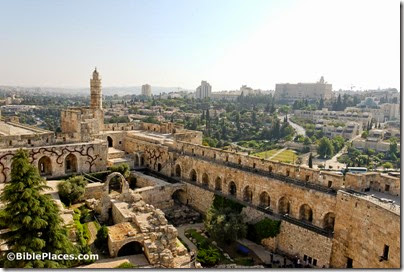The Tower of David Museum is hosting an opening event this evening of the Citadel moat and the Kishle. The Kishle has served as a police station for the Israelis, Jordanians, British, Ottomans, and Romans. Some remains have been uncovered from the palace of King Herod. From the official website:
After many years that the Citadel moat was closed to the public, the southern part of Jerusalem’s historic moat has been revived. The ancient builders of the Citadel surrounded the fortress with a dry moat, the first line of defense against enemies. As years passed, the moat served other purposes. It was a market place, a passage way and even a makeshift garbage dump. Excavations in the moat have exposed archaeological remains including an ancient quarry, a ritual bath from the Second Temple, a hewn water channel, secret passageways and a giant stone staircase and pools from the Hasmonean and Herodian eras.
The renewed moat also includes passage to a building that was closed for many years – The Kishla, the Ottoman Prison which was excavated over the last decade and contains remains detailing the history of Jerusalem, from the First Temple period to the establishment of the State. The site is now being opened for group visits. The domed building served as a prison for members of the pre-State underground and evidence of the period remains in a scratched inscription on the walls. Tours and cultural events will take place in the moat and the Kishle.
The public is invited to the opening of the Moat and the Kishle, enjoy music and refreshments. Entrance is free.
This posting indicates that the excavation director, Amit Reem, will be at the event. Guided tours in Hebrew will be available on upcoming Fridays in November for a reasonable charge. An article about the site was published in the Hebrew edition of Israel Hayom last week (page 29).
HT: Joseph Lauer
Photo from Jerusalem
